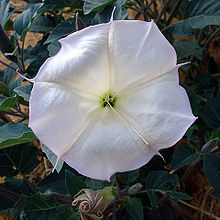During the last couple of decades, I have spent a fair amount of time in Arizona enjoying the Tucson shows, the desert, spring baseball, great southwestern food, the rock exposures and mountains, and the lack of snow removal. When I had my RV it was easy to travel and camp in many different localities around Tucson and Phoenix ranging from state parks to boondocking. We were always enamored with the County Parks (14 of them with several camping areas) in Maricopa County, the Sonoran Desert National Monument, and the next-door (Pima County) Lost Dutchman State Park.
Maricopa County is a “really, really” large county (9,224 sq, mi.) that contains the 5th largest city in the U.S (Phoenix), five Native American reserves, several mountain ranges and Wilderness Areas, and other federal and state protected areas. It seems like a “day trip” driving east-west across the county (132 miles) or north-south (103 miles).
A few years ago (Pandemic time) I decided to explore
(day excursions) a couple of the Wilderness Areas in the western part of the
County (no Covid bugs out there in the open spaces). By exploring, I really mean
driving slowly to gaze at the Sonoran Desert (at this stage of my life I rarely
venture far off the roads by myself). I slowly motored toward the Big Horn Mountains and
Hummingbird Springs Wilderness Areas located west of Phoenix but still situated
in Maricopa County. The intended journey was to traverse through Sonoran Desert National
Monument located in the Maricopa Mountains southwest of Phoenix and then north and northwest over to the southern part
of the Gila Bend and Painted Rock Mountains. So, with plenty of water and food and a full tank of gas, off I went. I also left a detailed proposed itinerary with my spouse in Apache Junction and my brother in Tucson and a promise "not to do anything stupid."
One of Arizona’s most famous mines is the Rowley located in the northern part of the Painted Rock Mountains and a producer of magnificent blades of orange wulfenite (lead molybdate) and mimetite (lead arsenate chloride). Although commercial mining of copper, lead and other mineral commodities ceased about a century ago, the mine is patented and has consistently produced specimen minerals since that time. MinDat lists 75 valid minerals including 13 Types and several varieties of uncommon lead minerals. Of course, the Mine is posted, and collectors must receive hard-to-obtain permission. From my point of view, that is OK since my claustrophobia does not allow explorations in mines or caves or small rooms or even large areas with crowds of people! But I could observe from a distance.
Wulfenite tab crowded with hundreds of tiny acicular mimetite crystals. Width FOV ~7 mm.Wulfenite tabs associated with hexagonal barrel shaped mimetite crystals.
Solitary crystal of wulfenite with out-of-focus mimetite crystals. Wulfenite crystal ~1mm in length.
Further north in the Desert are the joined Hummingbird Springs and Big Horn Mountains Wilderness Areas located in the Big Horn Mountains. Few trails seem to enter the mountains and I was not about to get stranded or stuck in such a desolate area, but less than 60 miles from the 5th largest city in the U.S.!
A local rockhound I met at a Tucson show told me about an old lead-silver-gold mine, the Moon Anchor, located just to the east of the Wilderness Areas. He thought that perhaps the dump was still open to rockhounds with a chance to collect maricopaite. Named after Maricopa County and with a nifty name like the Moon Anchor (perhaps the author of the name had “accidentally ingested some of the local Sacred Datura), who could resist a visit?

Open saucer-size flower of the saucer of Sacred Datura, known to western ranchers as Jimson Weed. All parts of Datura plants contain dangerous levels of anticholinergic tropane alkaloids and may be fatal if ingested by humans, livestock, or pets. Public Domain photo.
So off I went but was unable to get my vehicle to the mine due to “washouts” in the trail. As previously stated, I did not want to get stranded since my knees would not allow a long walk-about as they might have endured in the past. But all was not lost as I was able to purchase a specimen of maricopaite [Pb7Ca2(Si,Al)48O100-32H2O] collected from the only known locality in the world--the Moon Anchor. Interestingly, maricopaite is a zeolite mineral, and according to MinDat, is the only known natural zeolite with lead as an essential cation. Under a scope the mineral appears as soft (~1.0--1.5 Mohs) sprays of translucent, white, acicular crystals, thin bundles of extremely elongate acicular crystals, and mats with admixed mimetite.This strange, rare, little mineral seems to pair quite nicely with the sacred Datura and the saguaro cactus.
Sprays and scattered individual maricopaite crystals. FOV ~1.8 cm.
Sprays and sheaths of maricopaite crystals. FOV ~1.1 cm.
For a visual description of the Moon Anchor Mine check out the you-tube video shot by Steven Cyros at : https://www.youtube.com/watch?v=xj8Xwn_s1pA




